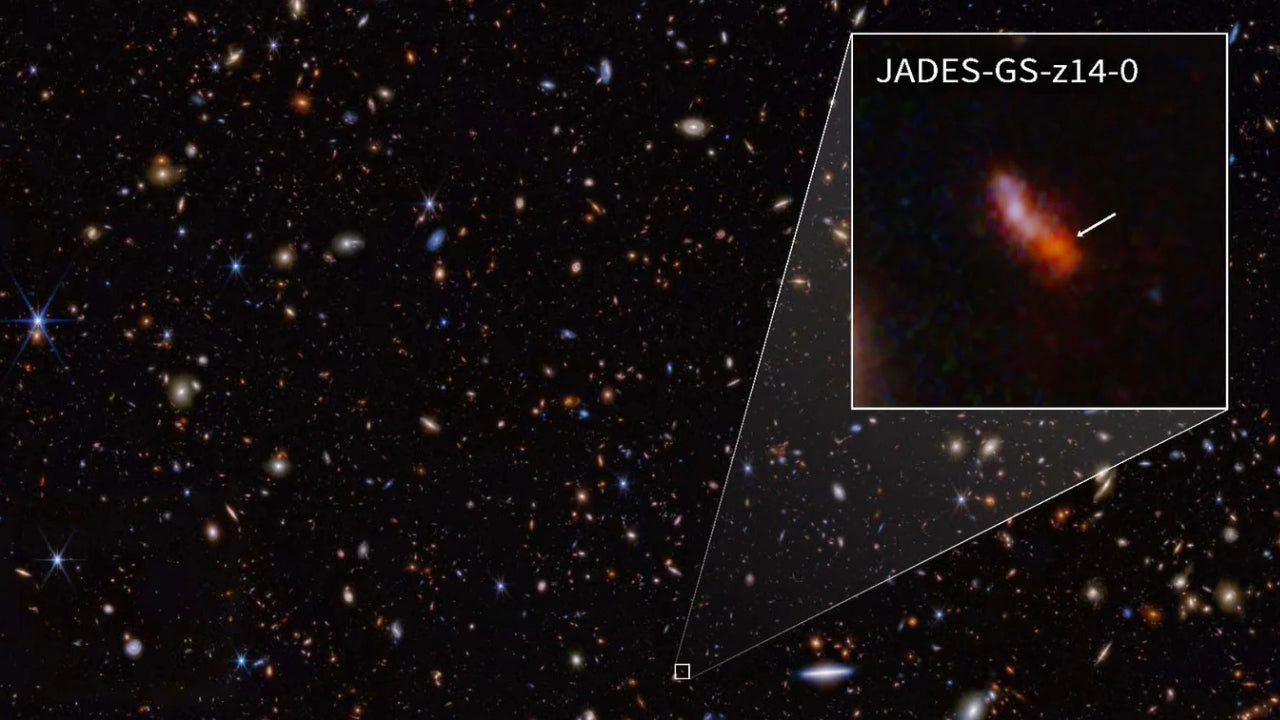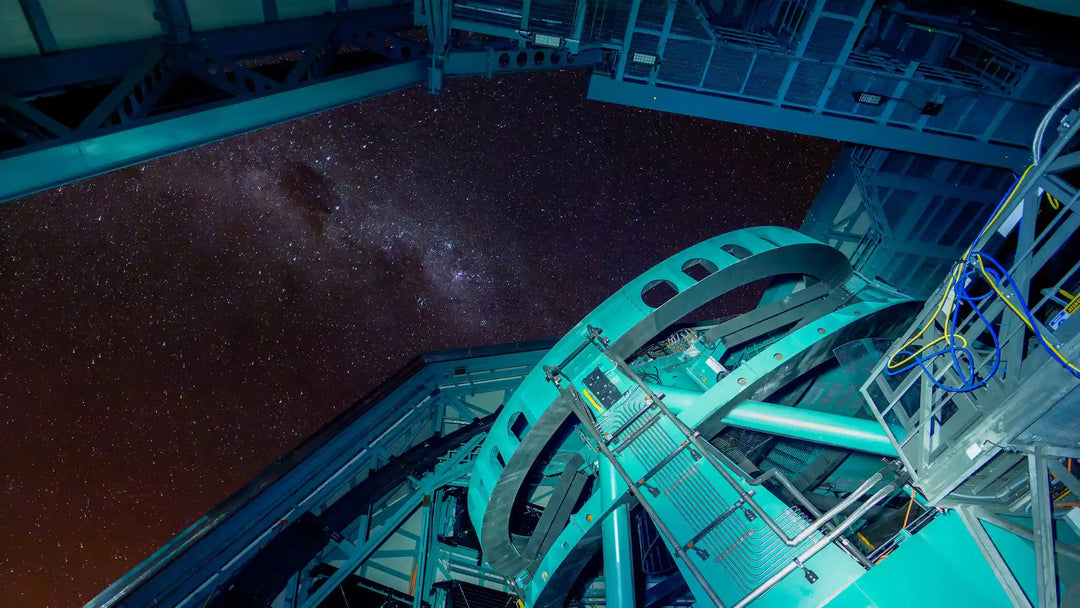JADES-GS-z14-0: NASA's JWST Discovering the Most Distant Galaxy

NASA’s James Webb Space Telescope (JWST) has made an awe-inspiring discovery: the most distant known galaxy, named JADES-GS-z14-0. This breakthrough allows scientists to study the universe's infancy, just a few hundred million years after the Big Bang. Let's delve into what this discovery means and why it is so significant for our understanding of early cosmic history.
Discovering Cosmic Dawn with James Webb Space Telescope
Exploring the Earliest Galaxies
Since its launch, the JWST has been pivotal in exploring what astronomers call the Cosmic Dawn. This period marks the first few hundred million years post-Big Bang when the first galaxies were born. These galaxies are critical for understanding the formation and evolution of stars, gas, and black holes at the universe's dawn.
JADES Program: A Leap in Cosmic Exploration
The JWST Advanced Deep Extragalactic Survey (JADES) aims to study these primordial galaxies. Observations by JADES in October 2023 and January 2024, utilizing Webb's Near-Infrared Spectrograph (NIRSpec), led to the identification of JADES-GS-z14-0. This galaxy dates back to just 290 million years after the Big Bang, marking a redshift of about 14, revealing how light stretches as the universe expands.

Understanding JADES-GS-z14-0
JADES-GS-z14-0’s spectrum, obtained over ten hours of observation, confirmed its record-breaking distance with a redshift of 14.32. The galaxy, over 1,600 light-years across, primarily comprises young stars, indicating it is highly luminous. This raises intriguing questions about how such a large, bright galaxy formed relatively quickly post-Big Bang.
Read more:
- The Pale Blue Dot Photo: History, Significance, and Legacy
- Pale Blue Dot Image: What About Large Format Prints like Fine Art?
- The Earthrise Photo: A Journey Through Earth’s Iconic Space Portrait
- William Bill Anders Tribute: Astronaut, Earthrise Photographer, Aviator
James Webb Space Telescope uncovers young stars in NGC 346’s dusty ribbons
JADES-GS-z14-0: Insights into Galaxy Formation
Further analysis revealed that JADES-GS-z14-0 emits in the mid-infrared spectrum, detected by Webb's Mid-Infrared Instrument (MIRI). It demonstrated significant ionized gas emission, including oxygen, suggesting that massive stars formed and died early in the galaxy’s life. This contradicts theoretical models of early galaxy formation, indicating that early universe conditions might have favored rapid, massive star formation.
Implications for Future Discoveries
The discovery of JADES-GS-z14-0 in a small sky region implies many similar luminous galaxies might be found, offering deeper insights into the Cosmic Dawn era. Observations will likely span even earlier periods, uncovering more about these early cosmic structures.
Check also:
AT2018fyk: the star survives a close encounter with a black hole only to meet it again
First known binary system composed of two Y-type brown dwarfs
Magellan shows volcanic activity on Venus – VERITAS mission to investigate
Enceladus holds potential for alien life with recent discovery of vital element
Anticipating the celestial show – Betelgeuse's potential supernova event
Supernova 2020eyj: First radio signal from the massive explosion of a dying white dwarf
Hubble Telescope Captures a Stellar Trio: The Dawn of a Sun-like Star
JADES-GS-z14-0 's Discovering: Conclusion
The groundbreaking discovery of JADES-GS-z14-0 offers unprecedented insights into the universe's infancy. It challenges existing theories and opens avenues for future exploration with the JWST. This cosmic gem signifies the rapid formation of large, luminous galaxies shortly after the Big Bang, reshaping our understanding of the early universe.
Key Takeaways
JADES-GS-z14-0 is the most distant known galaxy, discovered by JWST
It dates back to 290 million years post-Big Bang with a redshift of 14.32.
The galaxy is characterized by young stars and significant ionized gas emission.
This discovery challenges existing models of early galaxy formation.
Further observations may reveal similar galaxies, offering deeper cosmic insights.
FAQ about JADES-GS-z14-0
What is the James Webb Space Telescope (JWST)?
The JWST is a powerful space telescope launched by NASA to explore the universe's early galaxies and cosmic phenomena.
What makes JADES-GS-z14-0 so significant?
It is the most distant known galaxy, providing insights into star formation and cosmic conditions shortly after the Big Bang.
What is redshift, and why is it important?
Redshift measures how much a galaxy’s light stretches due to the universe's expansion, helping gauge its distance and age.
How does JWST observe distant galaxies?
WST utilizes instruments like NIRSpec and MIRI to capture and analyze light from ancient galaxies in the infrared spectrum
Why is JADES-GS-z14-0's luminosity surprising?
Its brightness and size indicate rapid star formation, contradicting current theories on early galaxy development.
What does the presence of oxygen in JADES-GS-z14-0 suggest?
It indicates that massive stars formed and died early, enriching the galaxy with heavier elements sooner than expected.
How does this discovery impact our understanding of the early universe?
It offers new perspectives on galaxy formation and the conditions in the universe's first few hundred million years.
Will JWST discover more such distant galaxies?
Given JADES-GS-z14-0’s discovery in a small sky region, more such galaxies are likely to be found, expanding our knowledge.
What is the Cosmic Dawn?
The Cosmic Dawn refers to the period shortly after the Big Bang when the first stars and galaxies began to form.
How does JADES contribute to cosmic research?
The JADES program provides critical data on early galaxies, aiding in understanding the formation and evolution of cosmic structures.
RESOURCES
- S. Carniani et others, A shining cosmic dawn: spectroscopic confirmation of two luminous galaxies at z∼14, arXiv:2405.18485 [astro-ph.GA], [full text], [01.06.2024]
- ESA, Galaxy JADES-GS-z14-0 Spectrum, esa.int, [01.06.2024]
- ESAWEBB, Webb finds most distant known galaxy (JADES-GS-z14-0 environment NIRCam image), essaweb.org, [01.06.2024]
- ESAWEBB, Webb finds most distant known galaxy (JADES-GS-z14-0 annotated pullout NIRCam image), esawebb.org, [01.06.2024]
- WEBBTELESCOPE, NASA’s James Webb Space Telescope Finds Most Distant Known Galaxy, webbtelescope.org, [01.06.2024]
- P. Edmonds, Astronomers find most distant galaxy using James Webb Space Telescope, phys.org, [01.06.2024]
- M. Peña, Earliest, most distant galaxy discovered with James Webb Space Telescope, news.ucsc.edu, [01.06.2024]
- I. Todd, Webb discovers the most distant galaxy ever seen, existing shortly after the Big Bang during the Cosmic Dawn, skynightmagazine.com, [01.06.2024]


![Vera C. Rubin Observatory: Revolutionizing Astronomy Through the World's Most Advanced Telescope [All You Need To Know]](http://astrography.com/cdn/shop/articles/vera-c.-rubin-observatory_main.webp?v=1751627507&width=1080)

Leave a comment